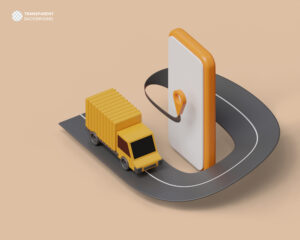Knowing what a Bill Of Lading Includes and the importance can help you. There are many companies that want you to believe the bills they send out are the bill of lading. This is not true.

A bill of lading is a document that is sent by a person or company to a recipient and includes all of the details of the transaction.
- Name and complete address of shippers and receivers
- Special account numbers or PO used between business for order tracking
- Instruction for the carrier for secure delivery
- Date of the shipment
- Number of shipping units
- Types of packaging that includes cartons, pallets, skids and drums
- Description about the shipped items (common name & material of manufacture)
- Declared value of the goods being shipped
- Note included if there is any hazardous substance in it
- Exact weight of the shipments – for multiple commodities, weight for each commodity is mentioned separately
- Freight classification of the items shipped, according to NMFC (National Motor freight classification)
A bill of lading is sent to customers for several reasons. It could be that a shipment cannot be delivered because the payment has not been received. It could be that the customer has changed their mind and wants to have the item returned and may require a second shipment. In some cases the customer may cancel the order for a different item and this is reflected in the bill of lading.
A bill of lading is just another name for an invoice. The invoice is a written document that describes a customer’s purchase and/or a receipt for a payment. The invoice is usually accompanied by a statement from the customer, which is basically a receipt for payment.
Bill of lading is usually sent to a business, but it can also be sent to customers, to certify the details of a purchase. The bill of lading is important because it provides accurate details of the transaction. Without a bill of lading, there may be discrepancies between the details provided by the customer and the information on the bill of lading.
As stated above, a bill of lading is sometimes referred to as an invoice, and in other cases it is called a receipt. Receipts are used in many industries, but many businesses use a bill of lading because of its accuracy. The terms are not always used interchangeably though.
The Federal Trade Commission or FTC has put together a website that explains the difference between a bill of lading and an invoice. They recommend that businesses type the terms into a search engine, but that the terms should be clearly defined for clarity. It is also possible to get these terms from the Better Business Bureau.
Sometimes, especially when a company or individual is trying to sell a product or service, there will be a lot of things to keep track of, and a bill of lading is a great way to keep track of all of the pertinent details. It is also a way to make sure that the transaction was correct and complete. By being aware of the terms used and how they relate to each other, the business owner will have a better understanding of the bills and the transactions that occur within the business.
yOU MAY ALSO BE INTERESTED IN
- The benefits of a well-designed inventory management system for your business.
 In today’s fast-paced and competitive business world, having a well-designed inventory management system is crucial for the success and growth of any organization. An efficient inventory management system can provide a wide range of benefits that can help streamline operations, reduce costs, and maximize profits. In this blog post, we will explore the importance of a well-designed inventory management system and how it can benefit your business. In conclusion, a well-designed inventory management system can …
In today’s fast-paced and competitive business world, having a well-designed inventory management system is crucial for the success and growth of any organization. An efficient inventory management system can provide a wide range of benefits that can help streamline operations, reduce costs, and maximize profits. In this blog post, we will explore the importance of a well-designed inventory management system and how it can benefit your business. In conclusion, a well-designed inventory management system can …The benefits of a well-designed inventory management system for your business. Read More »
- Why Sustainability is Important in Logistics and How Gpc Energy and Logistics is Leading the Way
 In today’s fast-paced world of business, where speed and efficiency are paramount, sustainability in logistics is often overlooked. However, the importance of sustainability in logistics cannot be understated, as it not only benefits the environment but also has numerous economic and social benefits. Gpc Logistics is a company that is leading the way in sustainable logistics practices, setting an example for others in the industry to follow. One of the key reasons why sustainability is …
In today’s fast-paced world of business, where speed and efficiency are paramount, sustainability in logistics is often overlooked. However, the importance of sustainability in logistics cannot be understated, as it not only benefits the environment but also has numerous economic and social benefits. Gpc Logistics is a company that is leading the way in sustainable logistics practices, setting an example for others in the industry to follow. One of the key reasons why sustainability is … - Harnessing the Power of Technology in Supply Chain Management: Key Roles and Benefits
 Supply chain management is a crucial aspect of any business operation, as it ensures a smooth flow of goods and services from suppliers to customers. In today’s highly competitive business environment, it is more important than ever to effectively manage supply chains to ensure efficiency and cost-effectiveness. Technology plays a crucial role in modern supply chain management, as it enables companies to streamline and optimize their processes, thereby improving overall efficiency and productivity. Here are …
Supply chain management is a crucial aspect of any business operation, as it ensures a smooth flow of goods and services from suppliers to customers. In today’s highly competitive business environment, it is more important than ever to effectively manage supply chains to ensure efficiency and cost-effectiveness. Technology plays a crucial role in modern supply chain management, as it enables companies to streamline and optimize their processes, thereby improving overall efficiency and productivity. Here are …Harnessing the Power of Technology in Supply Chain Management: Key Roles and Benefits Read More »
- Capabilities and Benefits of Shipments Tracking
 n today’s fast-paced world of e-commerce, customers expect quick and reliable deliveries. As a result, shipment tracking has become an essential tool for businesses to provide transparency and peace of mind to their customers. In this blog post, we will explore the capabilities and benefits of shipment tracking. Capabilities: Benefits: In conclusion, shipment tracking is a valuable tool for businesses to enhance customer satisfaction, improve efficiency, and build brand reputation. By utilizing the capabilities and …
n today’s fast-paced world of e-commerce, customers expect quick and reliable deliveries. As a result, shipment tracking has become an essential tool for businesses to provide transparency and peace of mind to their customers. In this blog post, we will explore the capabilities and benefits of shipment tracking. Capabilities: Benefits: In conclusion, shipment tracking is a valuable tool for businesses to enhance customer satisfaction, improve efficiency, and build brand reputation. By utilizing the capabilities and … - ways to enhance warehouse efficiency with prescriptive and predictive analytics.
 n today’s fast-paced business environment, maximizing warehouse efficiency is crucial to meeting customer demands, reducing costs, and improving overall productivity. One way to achieve this is by utilizing prescriptive and predictive analytics to optimize operations and make informed decisions. Prescriptive analytics uses data, mathematical algorithms, and machine learning techniques to recommend actions that will help improve warehouse efficiency. For example, this could involve suggesting the most optimal inventory levels, the best routes for picking and …
n today’s fast-paced business environment, maximizing warehouse efficiency is crucial to meeting customer demands, reducing costs, and improving overall productivity. One way to achieve this is by utilizing prescriptive and predictive analytics to optimize operations and make informed decisions. Prescriptive analytics uses data, mathematical algorithms, and machine learning techniques to recommend actions that will help improve warehouse efficiency. For example, this could involve suggesting the most optimal inventory levels, the best routes for picking and …ways to enhance warehouse efficiency with prescriptive and predictive analytics. Read More »

